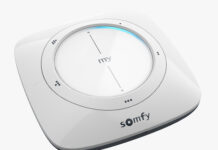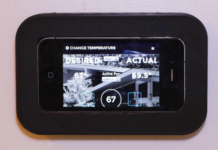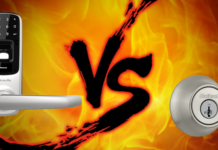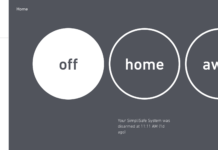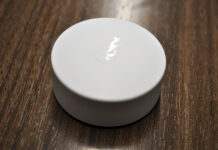Among all smart home devices, how do you know what home automation works with Google home? Google Home first burst onto the scene back in mid-2016 at Google I/O. It was then rolled out with Pixel toward the end of that same year.
This powerful alternative to Alexa, its only serious rival in the smart speaker/digital assistant arena. Google Home allows you to control and automate a huge array of tech and we’ll outline just some of the devices today. Typically most home automation devices work with Google Home, expect rival products but today you’ll find out.
What Is Google Home and Why Should You Buy It?
Google Home offers you the chance to take direct control of a broad range of smart home appliance using nothing but your voice and Google Assistant, the onboard digital butler and Alexa’s worst enemy.
Google Home is a smart speaker coming in 3 guises:
- Google Home: If you’re looking for a powerful and able speaker, Google Home is not the best option. If, on the other hand, you want a simple, cost-effective device enabling you to make full use of Google Assistant to automate your connected home using voice commands, it’s well worth the modest investment
- Google Home Mini: Finished with a tactile fabric and resembling a small ice hockey puck, the Mini version of Home comes in 3 colors so it will slot neatly in with your décor. Sound is underwhelming, but Google Home Mini is the perfect conduit for controlling other devices and appliance in your smart home hands-free
- Google Home Max: Google describes the sound issuing from Google Home Max as “room-filling”, and this is not far wide of the mark. You’ll get potent, undistorted bass and you can pair Max models for even more powerful audio. 6 onboard microphones with far-field recognition allow Google Assistant to pick up your commands from afar, and you’ll be able to use your virtual butler to take charge of a suite of other smart home gear in the true spirit of home automation
What Home Automation Works with Google Home?
With Google Home, you might not get quite such compatibility as Alexa offers but, as you’ll see today, you’ve got no shortage of options either. Interoperability stretched to fully 10,000 devices from more than 150 major smart home brands, and that number continues to swell.
Google Home scores, as you’d expect, when it comes to search. You’ll get far more involved responses to your queries.
Which model is best, though?
Well, if you’re hunting for an effective primary listening device for all your streaming requirements, Google Home Max is the obvious choice.
You’re mainly hunting for a vehicle for automating your home hands-free, either the original iteration or the scaled-down Google Home Mini make perfect sense and come in at a much keener price-point.
We recently took a detailed look at the best devices compatible with Google Assistant, but today we’re broadening the focus to examine how you can most effectively automate your home.
As with any study of smart home gear, there’s a certain degree of crossover, but with today’s exploration of Google Home, you’ll be able to see the shear breadth of scope you’ll enjoy if you invest in one of these awesome smart speakers.
We’ll get straight down to business now with a glance at what works with Google Home by smart home category…
Smart Home Hubs
The centerpiece of any connected home, hubs perform the role of tying all your devices and appliances together acting as a form of translator.
In a glutted segment of the market, here are 3 of your best options if you want to use Google Home…
Insteon Hub Central Controller
While SmartThings and Wink are perhaps the default choice for smart home hubs, the legacy system from Insteon is the connoisseur’s choice.
Due to the proprietary communication protocol and devices, Insteon is more of a closed system, but for those in the know, building out an Insteon ecosystem is a rewarding and efficient approach to home automation.
And, while compatibility might be somewhat limited, you’ll certainly be able to use Google Assistant to bark orders at your devices and get them firing away hands-free.
Whether you want to add Insteon WiFi Cameras or control your Nest or Insteon thermostat using Google Assistant, just grab a Google Home device and start building out a fully automated home with the Insteon hub as its foundation.
Samsung SmartThings
The OG of home hubs, Samsung’s stellar SmartThings gateway is now into its third iteration and continuing to edge from strength to strength.
The hub is a hard-hitter in its own right, but when you add the motion sensor, multipurpose sensor and outlet – these are available in the pocket-friendly Home Monitoring Kit – you’ll get even wider-reaching functionality.
Compatibility is first rate outside the Samsung ecosystem, too. By adding in voice commands with your Google Home device, you’ll be able to step things up a notch further.
Samsung serve up a robust guide to using Google Assistant for home automation so you can take a step-by-step look at getting the very most from your Google Home device, and get it working in perfect harmony with your SmartThings set-up.
Wink Hub 2
Rounding out our home hub section, the classic Wink, now in retooled format, is looking leaner than ever before and offers you multiple connectivity options.
Supporting all major communication protocols, from Z-Wave and Zigbee through to Bluetooth LE and Lutron Clear Connect, you can automate over 400 devices using nothing but voice commands.
Controlling your smart devices in-app on your smart phone can be convenient and also offers you the flexibility of remote access. When you’re at home, though, nothing beats spitting out a few words and enjoying full hands-free automation.
With Wink Hub 2 underpinning your smart home, you’ll be able to ratchet up automation and get all those devices working together to make your life easier every step of the way with the strength of Google Assistant behind you.
Smart Thermostats
Automating climate control in your smart home is one of the most common starting points.
When you can take things to the next level and use voice commands, life just gets easier and easier.
We’ll highlight 3 of the best smart thermostats now that allow you to use the might of Google Assistant to keep the temperature just the way you like it…
ecobee4
You get Alexa baked in with this iteration of ecobee, but you can also use Google Assistant if you prefer.
This smart thermostat might not be particularly cheap, but it’s easy to achieve savings of 10-15% on your utility bills once you’ve got your home running at peak energy-efficiency. With free energy reports, you’ll be able to see if this hits the claimed 23% savings the manufacturer puts forward!
Where most thermostats only read temperature in a single spot, the sensor you’ll get with ecobee4 puts an end to those frustrating hot and cold zones. You can add up to 32 of these sensors if you’re lucky enough to have a sprawling smart home. These are intelligent enough to sense occupancy and to give you warmth or cooling when you need it then cut the temperature right back when nobody is around.
Whether you want to tweak temperatures from your smart phone or by voice command, ecobee4 is a top-notch smart thermostat that also looks great on the wall. And since it’s hardwired, you can also opt for professional installation at a very reasonable price to take all the sting out of getting started.
Nest Learning
Purchased by Google for $3.2 billion way back in 2014, Nest in tandem with Google Home is a powerhouse combination.
The third generation of the enduringly popular and highly intelligent Learning Thermostat is smarter than ever before. You can sidestep the rigors of programming completely and allow this compact unit to pick up on the temperatures you prefer and auto-schedule without user input.
You’ll of course be able to control your thermostat remotely using your cell phone, laptop or tablet so you can stay on top of climate control at home even if you’re away on vacation or caught up late at the office.
Beyond this, using Google Home lets you control your thermostat along with other connected devices hands-free and fuss-free.
Honeywell Home WiFi Color Thermostat
If you’re looking for an affordable and capable alternative to the usual smart thermostat suspects, Honeywell’s impressive range features this neat WiFi-enabled color thermostat boasting compatibility with Google Home.
For anyone not so tech-savvy in your home, the oversized color touchscreen permits user-friendly manual interaction. If you’re comfier with technology, you can take charge of your thermostat using the nimble Honeywell app. This also delivers the inbuilt advantage of remote access.
Assuming you have a Google Home device, you’ll also be able to operate the thermostat using voice control.
If you want to save time, effort and money when those power bills drop each month, this energy-efficient beast from a brand you can trust is a seamless way to use all that Google Home has to offer when it comes to home automation.
Smart Lighting
Smart lighting comes in many forms. Check out our recent glimpse at the difference between smart bulbs, smart plus and smart switches if you’re unsure which solution would make the best fit for you.
Here’s a glance at some of the smartest options if you want to harness Google Home to automate your lighting.
Sengled Element
Smart bulbs are a great way to dip your toes into the world of smart lighting without needing to commit to rewiring.
The Element series from Sengled offers budget smart LED bulbs that can save you money on your power bills through increased energy-efficiency. You’ll be able to keep a close eye on this in-app to see just how quickly you get a return on your investment.
By adding the Element hub, you’ll be able to use Google Assistant to streamline control of your lighting further. If you already have a SmartThings or Wink Hub, you won’t need this additional gateway to embrace voice control.
From daylight white and soft white dimmable bulbs through to the pricier color-changing smart bulbs, you’re spoiled for choice with Sengled Element lighting, and with Google Assistant behind you, controlling them just got even easier than ever before.
Philips Hue
If you want a more involved look at Philips Hue smart lighting, we took a look recently at setting up the starter kit and the best apps available for automation.
When you introduce Google Assistant to the equation, though, you’ll be able to do far more than just turn your lights on and off hands-free. You’ll be able to ask your digital assistant if your kids left the lights on upstairs and you can also dim the brightness using voice commands when you’re settling down to a movie. You can sync your lighting neatly, and you’ll also be able to set scenes to make operation quicker and less intrusive than ever before.
Arguably the leader when it comes to smart lighting, you have a wealth of choice with Philips Hue, whether you want white or colored bulbs, light strips or a whole smart home stuffed with smart lighting that you can command using nothing but your voice.
LIFX
One of the key selling points of LIFX bulbs is the super-simple set-up. With no need for a hub, these smart lights are plug-and-play at its finest.
Admittedly, the bulbs are more expensive than Philips Hue but, depending on your requirements, not needing to invest further in any type of hub might mitigate that extra cost.
If you have Google Home in the house, you’ll be able to turn your lights on or off and also schedule them to activate when you return home or turn themselves off as you head out the door to work hands-free.
While not the wisest choice if you want a fully automated lighting solution throughout your house – the cost of those bulbs soon adds up – for certain use cases, LIFX is the standout winner. And with Google Assistant, automation becomes simpler than ever before.
Nanoleaf Smart Bulbs
Nanoleaf’s Smarter series is not only Apple HomeKit-enabled but also allows you to use Google Home for maximum versatility.
The world’s most energy-efficient light bulbs, Smart Ivy LEDs also let you personalize the lighting in your smart home using voice control so you can kick back in your home theater without needing to constantly jump up out of your seat.
Although these LEDs are only 7.5 watts, you’ll get the same output you could expect from a 60-watt incandescent bulb with an expected lifespan of more than 25 years.
To ice the cake, the striking design of these bulbs makes them a real statement piece.
TV and Audio
Home automation doesn’t need to be limited to the workaday basics of lighting and temperature regulation.
You’ve got plenty of choices when it comes to entertainment and Google Home beyond that you’ll find on the smart speaker itself.
Google Chromecast
Chromecast, now into its third generation, gives you the ability to watch movies and live TV shows or to stream from YouTube from your phone to your TV.
What makes this even more convenient is being able to kickstart streaming hands-free thanks to Google Assistant.
Plugging into the HDMI slot on your TV, this interface-less streaming device is a fantastic way to update your viewing experience without the expense of a new smart TV.
If you’re wondering whether investing in this Google-built device is really worth it, check out our guide showing you 20 ways to get the most out of Chromecast for some inspiration.
Google Chromecast Ultra
Unsurprisingly, the more expensive Chromecast Ultra offers you the chance to use Google Home to watch content in 4K resolution.
While basic functionality and channel selection is the same as on the base model, you will need an external power source for the Ethernet connection. As with Chromecast, a stable WiFi connection is also a prerequisite.
To automate your home theater the easy way, investing in either of these classic Google Chromecast devices is a no-brainer.
Smart Locks
Smart locks, as we often point out, are far more about convenience than security. After all, you’re just replacing one form of entry system with another rather than intrinsically ramping up the safety factor.
That said, Google Assistant is all about convenience so add August’s range-topping Smart Lock Pro to your repertoire and wait for your life to get easier and easier…
August Smart Lock Pro
Keyless access is becoming the norm with connected homes the world over and, although we just said that most smart locks are more about convenience than security, August’s Smart Lock Pro has a key safety feature worth mentioning…
DoorSense lets you check up on doors and make sure they’re closed so you can kiss goodbye to that horrible feeling you get when you’re halfway to work and start questioning if you remembered to lock up.
Auto-unlock welcomes you home by eliminating the need for any interaction at all and permitting seamless hands-free entry into your smart home. When it’s time to head out, your door will automatically lock and, if you’re not confident enough the tech has done it’s job, you can always check up on the status remotely to make sure any time you choose.
If you want a more sci-fi approach, you can also use the power of Google Assistant to speak to your smart lock and, Open Sesame, in you go.
Smart Video Doorbells
Smart video doorbells offer you the chance to stay informed on who is at your front door even if you’re not at home and you can take full advantage of Google Assistant to automate things even more seamlessly.
Ring Video Doorbell 2
Ring are famous for their commitment to making neighborhoods safer places and inviting you to encircle your smart home with a Ring of Security. The legendary Video Doorbell 2 starts before you even enter the home and automates your entry system to add a layer of total convenience on top of safety.
With a wide-reaching field of view, 1080p HD video and two-way audio, you can stay fully connected with your home even if you’re on the other side of the world.
Whether you opt for the battery-powered or hardwired model, you’ll be able to take full advantage of Google Assistant to enjoy hands-free control of your entry system.
Smart Security Cameras
You’ve got a wealth of choice when it comes to smart home security. Look out for our upcoming look at whether or not it’s really worth it for a full and frank lowdown.
Aside from Nest’s mighty range of WiFi cameras, both indoor and outdoor, what other options do you have for smart security cameras?
Netgear Arlo Pro
If you’re looking for a wire-free and renter-friendly solution to smart home security, Netgear’s Arlo Pro is the obvious choice. It’s not cheap, but the best things in life seldom are.
With rechargeable batteries that give you plenty of lifespan and a fully weatherproofed unit you can pop anywhere, you’ll get a piercing 100-decibel siren kicking in when the system is triggered by motion or sound.
HD quality video and two-way communication allows you to stay connected to your security system so what could be better?
Well, full compatibility with Google Assistant provided hands-free control and you’ll also be able to use a full range of other methods from your smart phone and tablet right through to a web browser for complete versatility.
Smart Outlets
Smart plugs are deceptively simple pieces of kit with surprising versatility.
What could be easier than controlling plug-in devices from your smartphone? How about doing so with voice commands instead?
Belkin Wemo
The Wemo Mini WiFi Plug-In is a neatly designed and compact unit with a stackable design so you can use a pair of these smart plugs in a single outlet.
You can automate any plug-in device from a lamp and heater to a fan or coffee maker with simple scheduling or you can also use Google Assistant to turn appliances on and off hands-free.
Whether you prefer to use Google Home or any other Assistant-enabled device, you can bark out a command and the lighting or temperature will change instantly.
Robotic Vacuum
If you’re not sold on the idea of robotic vacuums, have a look at our detailed breakdown right here.
If you’re already sold on the idea of automating your cleaning as well as the operation of your smart home, why not consider the Neato Botvac as an alternative to the ubiquitous iRobot Roomba?
Neato Botvac Connected
The LaserSmart mapping on Botvac means your robot will navigate even complex connected homes intelligently while delivering the best possible cleaning coverage. After all, a robotic vacuum is not much use if you need to clean up behind manually when its job is supposedly done.
The innovative D-shaped design blitzes all the debris and pathogens that tend to collect along the walls and this vac can even deal with stubborn pet hair.
With regular software updates and now controllable with Google Assistant, the Neato Robovac shows that home automation with Google Home really knows no boundaries.
Final Word
We hope this look at what home automation works with Google Home has given you plenty of confidence that investing in one of the trio of smart speakers has far more to offer than simply streaming music or organizing your day with Google Assistant.
We’re constantly updating smart home news to bring you the very best in smart home tech along with plenty of how-to guides and suggestions on streamlining control of your connected home so come back soon.
The post What Home Automation Works with Google Home? appeared first on Smarthome Blog.

